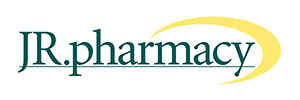Accurate financial reports are necessary when selling a pharmacy. However, accurate and timely financial information should be front and centre of your mind all the time.
Tracking retail financial data enables pharmacy owners and managers to make decisions and control the performance of the business. In other words, make it ready for sale if that is your motivation.
It is no longer acceptable to operate the pharmacy based solely on how many scripts you did in a day or how much cash is in the bank. The survival of your pharmacy is solely dependent on how many customers you serve, whether you provided an outcome for them, they pay for it and they return (i.e. did they value what you gave them?).
Pharmacies have many sources of data that can be collected and analysed. It is however ineffective without the ability to easily assembled it into easy to read reports in a timely manner.
Getting quality data into the accounting system to provide quick, easy to read reports is paramount. To achieve this you need to automate such things as the importation of Point of Sale data (daily sales, customer, script and items numbers) and reconciliation of the monthly supplier statements and bank entries.
As well as using the reports for GST reporting, they must be accurate in order to make decisions. The test for that is:
- Do they include closing stock values?
- Does that stock include forward charged stock?
- Are forward charge supplier amounts included in the creditors at month end?
- Do they include customer and PBS debtor movements?
The reports should be tailored for your pharmacy and be understandable. For example, if you operate traditional service structures you must have a tool that consolidates the results.
As a retail business you also need to consider retail oriented Key Performance Indicators (KPI’s) to understand what is happening.
Sophisticated retailers are reviewing this information constantly within their own organisations. However, without benchmarking by looking at their competitors in the retail sector, the results are meaningless.
When going through the process of benchmark comparison, it is important to compare to like stores (i.e. not just a total industry average).
The data to put the KPI’s together must include financial information from the Profit & Loss statement and must also include quantitative data such as size of the pharmacy, trading hours, customer numbers and number of full time equivalent staff to name a few.
The KPI report must be automated, accurate and be available in a very short time after the end of a reporting period. The competitive landscape in which we all operate commands that we must be aware of the results, what influences them and what to change almost instantly.
The trick to timely financial management is automating as much of the process as possible. At JR Pharmacy we have developed cost effective systems and processes to help pharmacies save time and money in preparing benchmarked financial reporting. Call me to discuss the opportunity for your pharmacy to save money and get better reporting.





